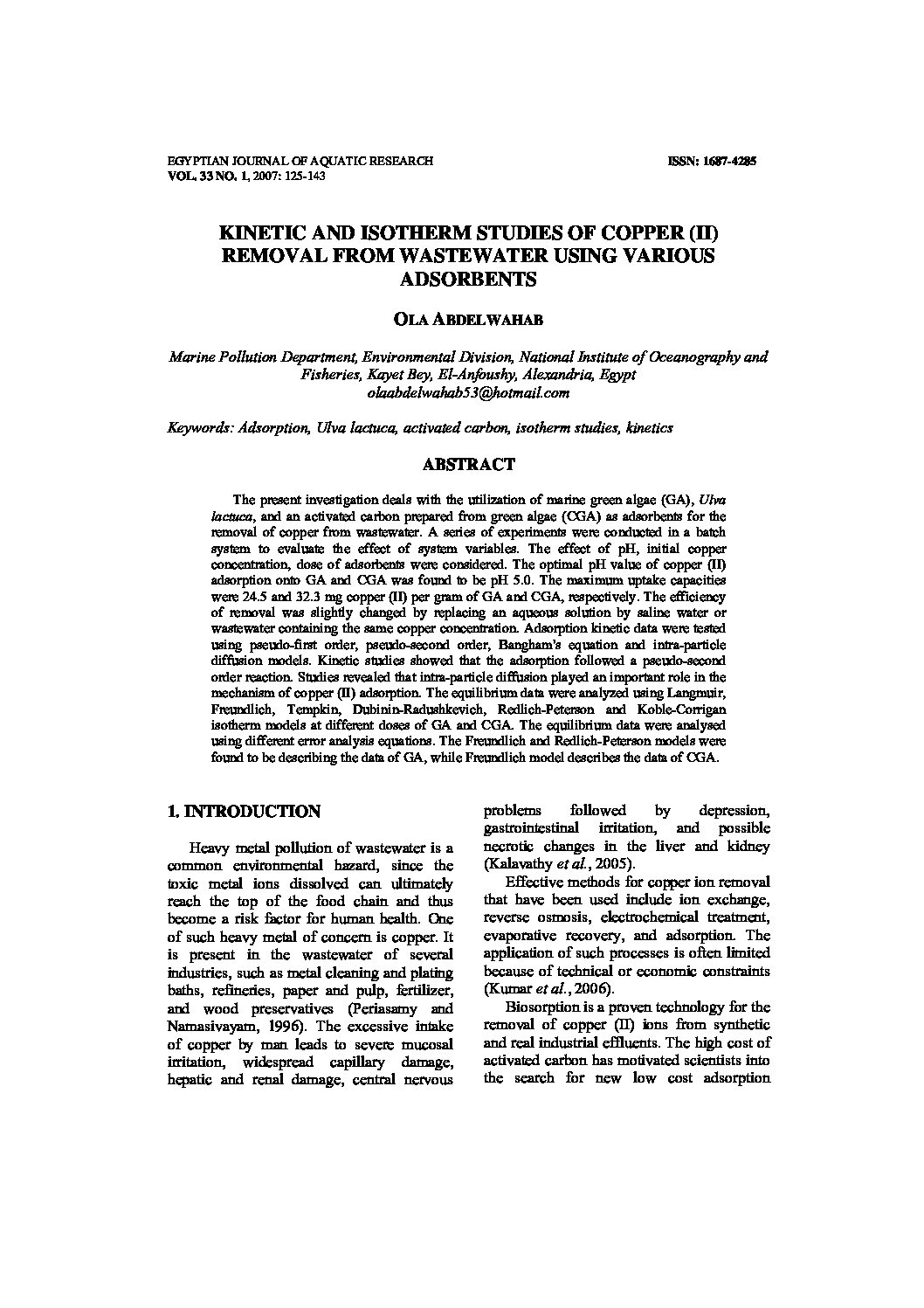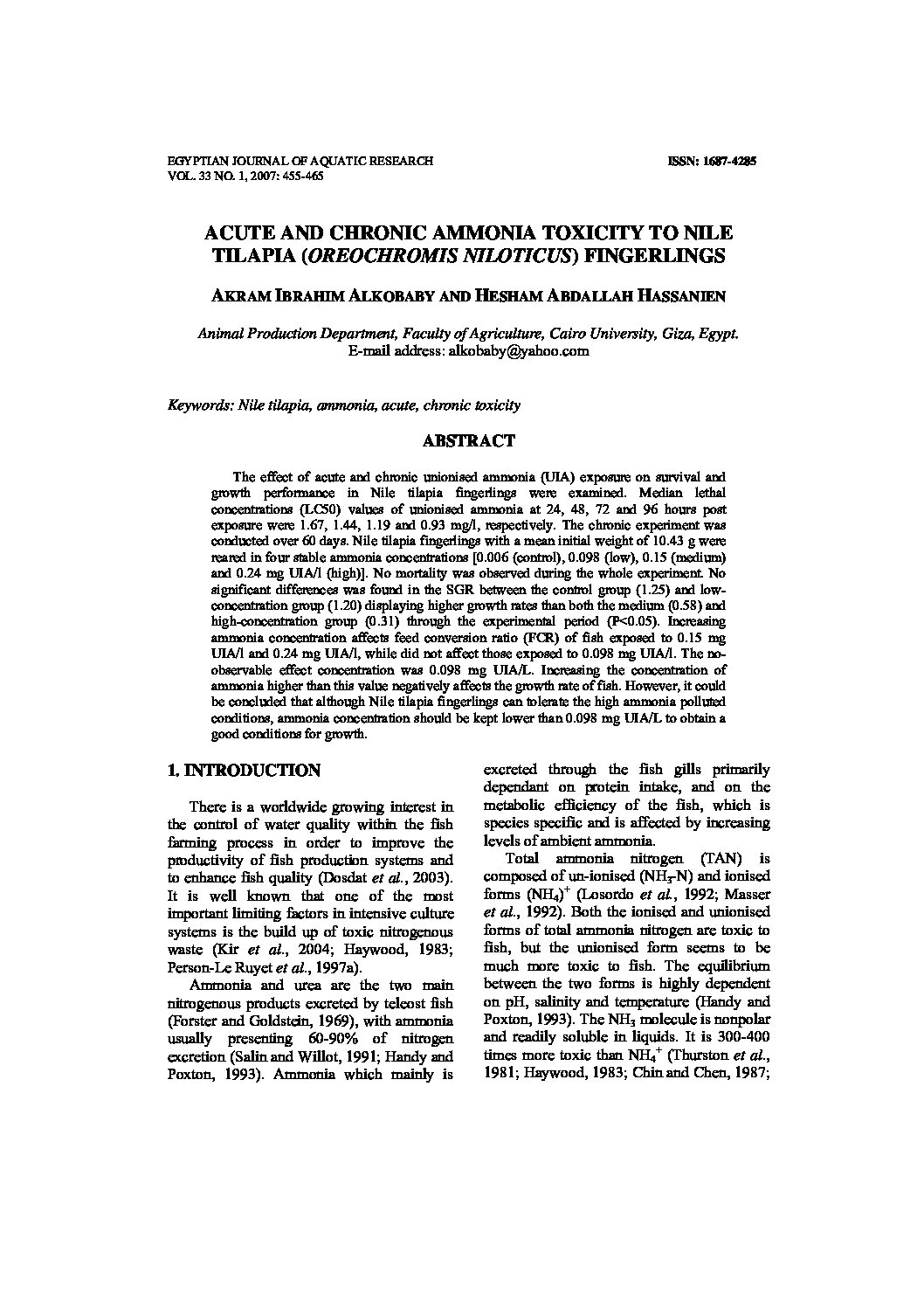Categories
vol-33KINETIC AND ISOTHERM STUDIES OF COPPER (II)
REMOVAL FROM WASTEWATER USING VARIOUS
ADSORBENTS
OLA ABDELWAHAB
Marine Pollution Department, Environmental Division, National Institute of Oceanography and
Fisheries, Kayet Bey, El-Anfoushy, Alexandria, Egypt
[email protected]
Keywords: Adsorption, Ulva lactuca, activated carbon, isotherm studies, kinetics
ABSTRACT
The present investigation deals with the utilization of marine green algae (GA), Ulva
lactuca, and an activated carbon prepared from green algae (CGA) as adsorbents for the
removal of copper from wastewater. A series of experiments were conducted in a batch
system to evaluate the effect of system variables. The effect of pH, initial copper
concentration, dose of adsorbents were considered. The optimal pH value of copper (II)
adsorption onto GA and CGA was found to be pH 5.0. The maximum uptake capacities
were 24.5 and 32.3 mg copper (II) per gram of GA and CGA, respectively. The efficiency
of removal was slightly changed by replacing an aqueous solution by saline water or
wastewater containing the same copper concentration. Adsorption kinetic data were tested
using pseudo-first order, pseudo-second order, Bangham’s equation and intra-particle
diffusion models. Kinetic studies showed that the adsorption followed a pseudo-second
order reaction. Studies revealed that intra-particle diffusion played an important role in the
mechanism of copper (II) adsorption. The equilibrium data were analyzed using Langmuir,
Freundlich, Tempkin, Dubinin-Radushkevich, Redlich-Peterson and Koble-Corrigan
isotherm models at different doses of GA and CGA. The equilibrium data were analysed
using different error analysis equations. The Freundlich and Redlich-Peterson models were
found to be describing the data of GA, while Freundlich model describes the data of CGA.







